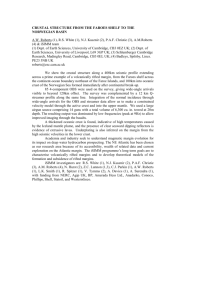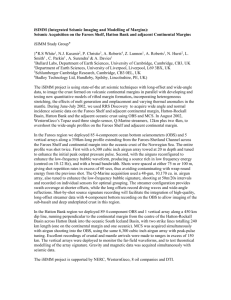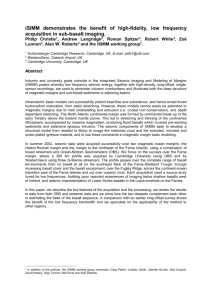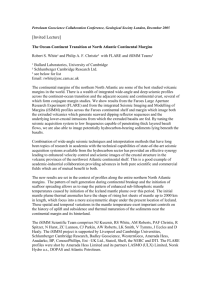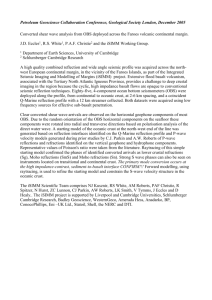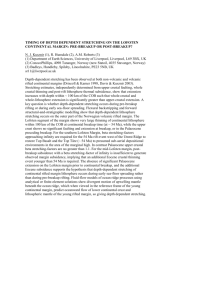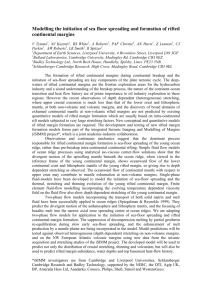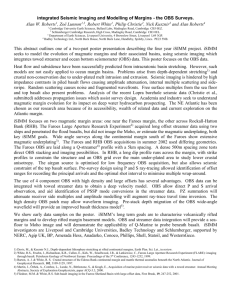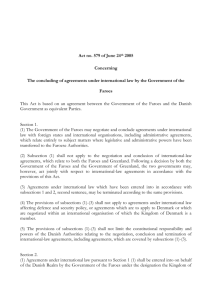Crustal Structure of the Faroes North Atlantic Margin
advertisement
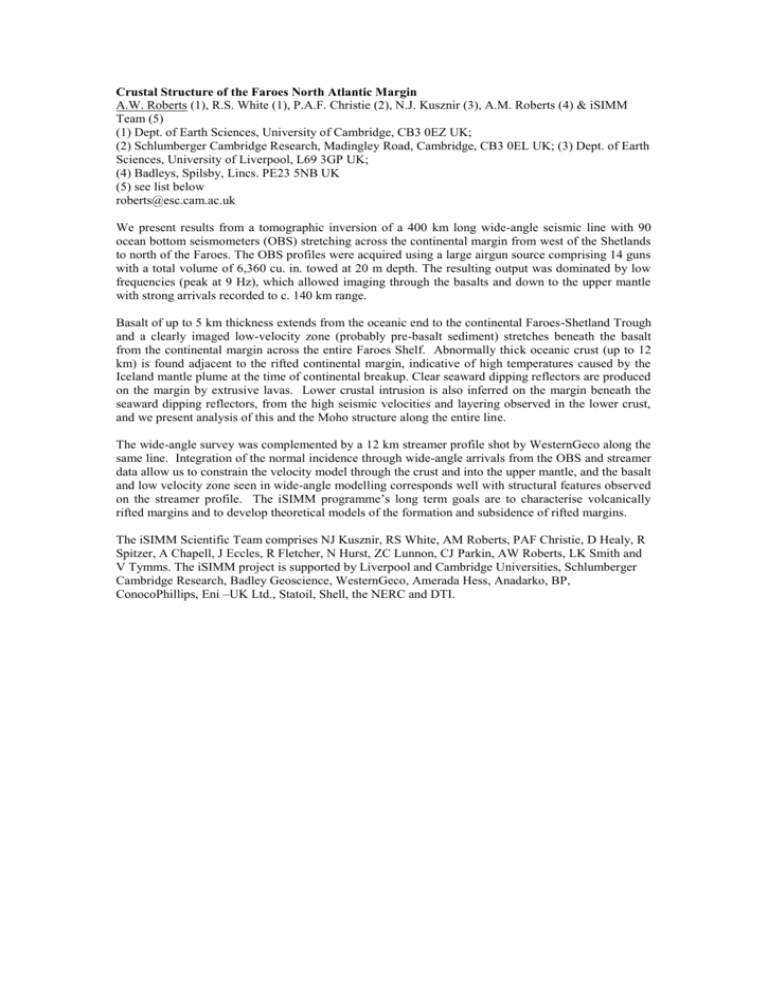
Crustal Structure of the Faroes North Atlantic Margin A.W. Roberts (1), R.S. White (1), P.A.F. Christie (2), N.J. Kusznir (3), A.M. Roberts (4) & iSIMM Team (5) (1) Dept. of Earth Sciences, University of Cambridge, CB3 0EZ UK; (2) Schlumberger Cambridge Research, Madingley Road, Cambridge, CB3 0EL UK; (3) Dept. of Earth Sciences, University of Liverpool, L69 3GP UK; (4) Badleys, Spilsby, Lincs. PE23 5NB UK (5) see list below roberts@esc.cam.ac.uk We present results from a tomographic inversion of a 400 km long wide-angle seismic line with 90 ocean bottom seismometers (OBS) stretching across the continental margin from west of the Shetlands to north of the Faroes. The OBS profiles were acquired using a large airgun source comprising 14 guns with a total volume of 6,360 cu. in. towed at 20 m depth. The resulting output was dominated by low frequencies (peak at 9 Hz), which allowed imaging through the basalts and down to the upper mantle with strong arrivals recorded to c. 140 km range. Basalt of up to 5 km thickness extends from the oceanic end to the continental Faroes-Shetland Trough and a clearly imaged low-velocity zone (probably pre-basalt sediment) stretches beneath the basalt from the continental margin across the entire Faroes Shelf. Abnormally thick oceanic crust (up to 12 km) is found adjacent to the rifted continental margin, indicative of high temperatures caused by the Iceland mantle plume at the time of continental breakup. Clear seaward dipping reflectors are produced on the margin by extrusive lavas. Lower crustal intrusion is also inferred on the margin beneath the seaward dipping reflectors, from the high seismic velocities and layering observed in the lower crust, and we present analysis of this and the Moho structure along the entire line. The wide-angle survey was complemented by a 12 km streamer profile shot by WesternGeco along the same line. Integration of the normal incidence through wide-angle arrivals from the OBS and streamer data allow us to constrain the velocity model through the crust and into the upper mantle, and the basalt and low velocity zone seen in wide-angle modelling corresponds well with structural features observed on the streamer profile. The iSIMM programme’s long term goals are to characterise volcanically rifted margins and to develop theoretical models of the formation and subsidence of rifted margins. The iSIMM Scientific Team comprises NJ Kusznir, RS White, AM Roberts, PAF Christie, D Healy, R Spitzer, A Chapell, J Eccles, R Fletcher, N Hurst, ZC Lunnon, CJ Parkin, AW Roberts, LK Smith and V Tymms. The iSIMM project is supported by Liverpool and Cambridge Universities, Schlumberger Cambridge Research, Badley Geoscience, WesternGeco, Amerada Hess, Anadarko, BP, ConocoPhillips, Eni –UK Ltd., Statoil, Shell, the NERC and DTI.
